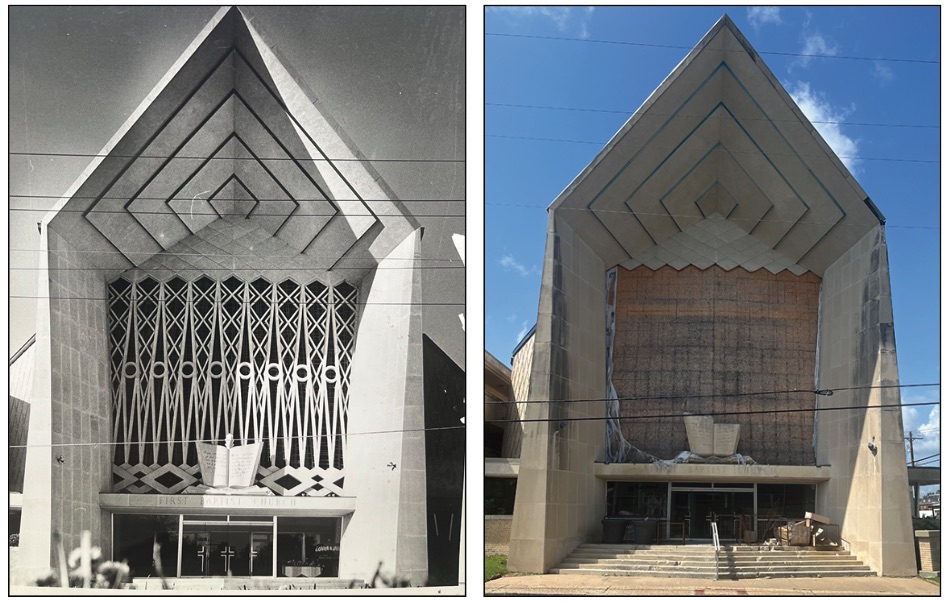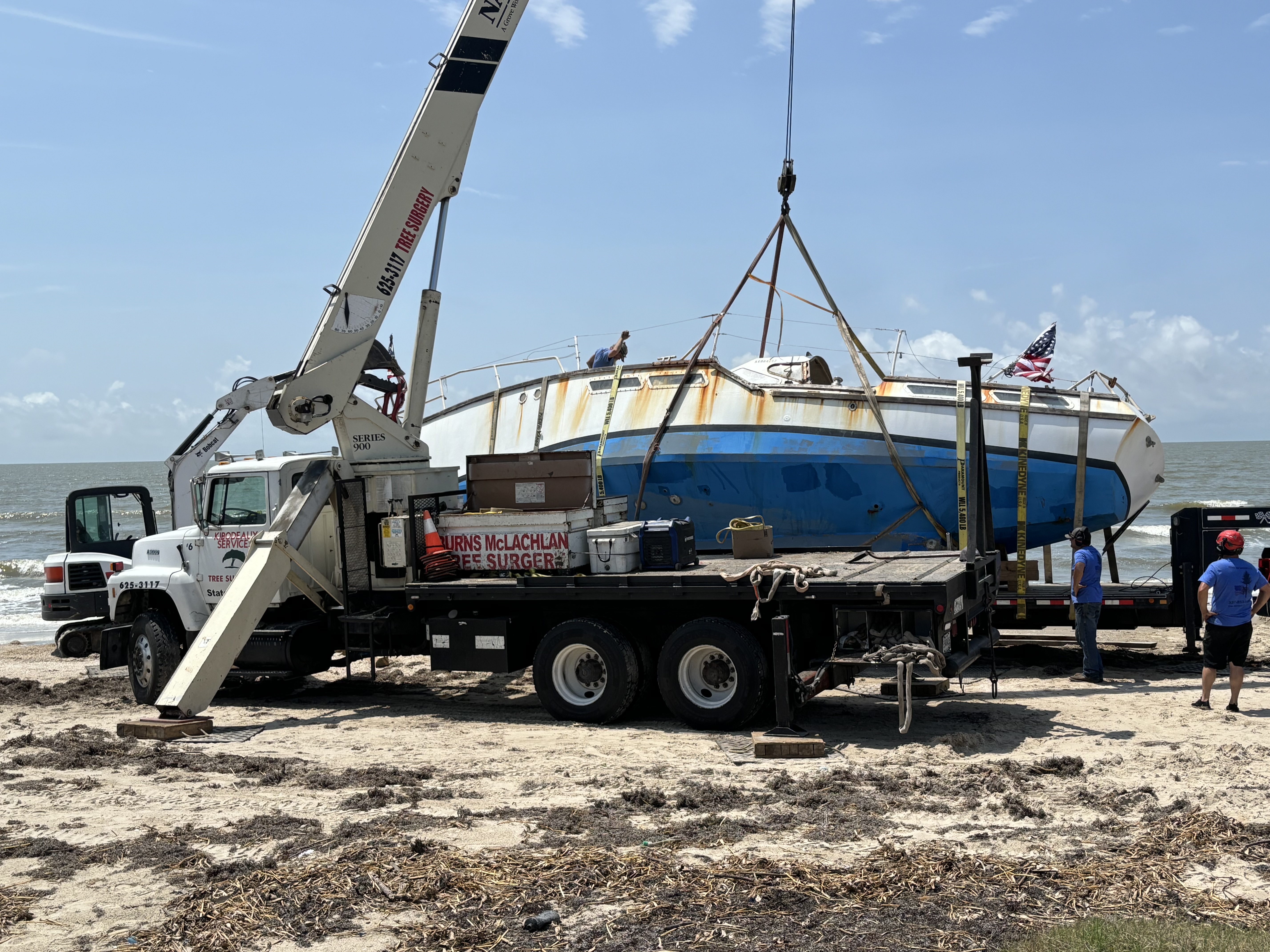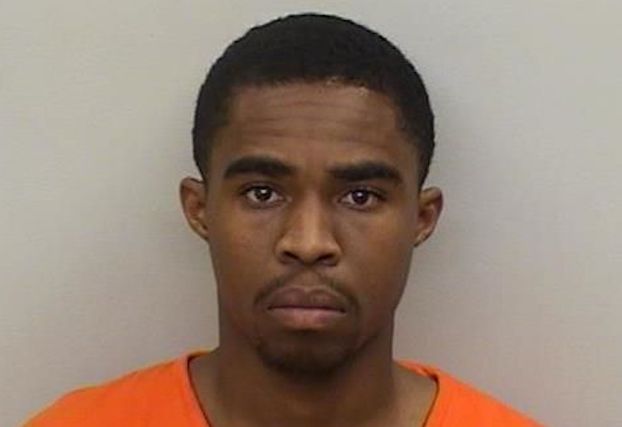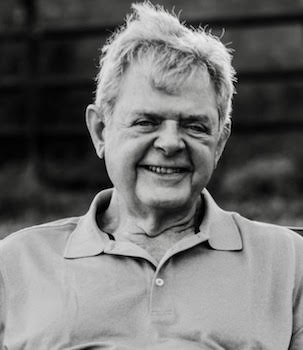The Informer: Hurricane wreaked havoc on downtown landmark
Published 6:45 am Saturday, May 24, 2025

- The Pujo Street entrance of First Baptist Church of Lake Charles, left, is pictured on Jan. 21, 1978. The outside of the church sanctuary today looks quite different after Hurricane Laura hit the area in 2020.
First Baptist Church of Lake Charles began its mission in 1880 — long before its congregants had a church building in which to worship.
Originally meeting in the homes of its members, the church formally began offering Sunday school services in the two-story framed courthouse on downtown Ryan Street while funds were being raised for the erection of their own house of worship.
“Shortly after the organization of these few faithful and devoted Christians, they began earnestly to concern themselves about the building of a house of worship; this to them was, all things considered, no small undertaking, but firm in their faith and with an indomitable Christian spirit, and believing in the ultimate success of their prayerful efforts, they set about the undertaking,” reads the front page of the Feb. 13, 1908, Lake Charles Daily American.
Steadily the membership of the once-small group increased to 400 as their pastor, A.P. Scofield, traveled about town promoting the church and seeking donations to its building fund.
“The work continued with unabated zeal and effort” until 1907 when their funding goal was met. Their next act of business was to lay a cornerstone for their new house of worship at the corner of Hodges and Pujo streets.
The ceremony did not get off to a great start.
“By a misunderstanding which has arisen in the past few days the Masons have withdrawn from the task of placing the cornerstone of the new Baptist church and the ceremonies will proceed without their assistance,” reads Lake Charles Daily American.
The newspaper said Masonic law requires that every cornerstone laid by the Masonic order bear the emblem of the order and the name of the grand master.
“When the stone arrived from New Orleans it was dressed in accordance with the Masonic law but a number of members of the church objected to the presence of any inscription or insignia on the cornerstone,” the newspaper reported. “They were therefore chiseled off and following their law the Masons have withdrawn from the exercises altogether.”
Ultimately, nine visiting officers “of high rank” within the Masonic lodge did choose to participate in the ceremony on Feb. 12, 1908, “making the entire service one of great beauty and interest to the large crowd of spectators assembled to do honor to the event” the newspaper reported.
At the ceremony, a membership roll and copies of the Lake Charles Daily American, the Baptist Chronicle and the Orphanage paper were placed inside the stone as “Nearer My God to Thee” was played by the Louisiana State Band.
“The building was begun in the latter part of 1907 and promises to be one of the handsomest edifices in the state outside of the city of New Orleans,” the newspaper reported.
The church they built as lined with stained-glass windows along the interior of the sanctuary and choir loft. Sunshine from a stained glass skylight also shown down on congregants as they lined the wooden pews, hymnals in hand.
In 1941, Dr. William L. Stagg Jr. became pastor of the church. Under his ministry a second building fund was initiated with plans to enlarge the facilities due to the growing membership number.
The formal dedication of the new building began on Oct. 16, 1957, with a five-day program of services offered.
The Gothic-style brick building they would eventually complete had a seating capacity of 700 in its sanctuary. On the outside of the building a stone replica of the Ten Commandments was erected on an overhang of the lobby’s entrance.
A community workout center, gym, two-story educational building and fellowship hall would later be added.
When Hurricane Laura devastated the region on Aug. 27, 2020, First Baptist Church suffered extensive damage — so much so that its congregants had to relocate to another facility.
The congregants now meet at 3091 Advent Court in Morganfield.
David Shamieh purchased the church in November 2021 for $8 million. “I hate to see history destroyed,” he told the American Press on Aug. 27, 2024. “So many people have told me about their memories here, memories of weddings, baptisms and Sunday School lessons as youngsters.”
Shamieh said he would like to see the church on the national historical register, and he wants the sanctuary restored to its original lines and materials, right down to the huge and ornate wood and stained glass design over the doors at the Pujo Street main entrance.
Shemiah has already renovated part of the church property for an event center.





